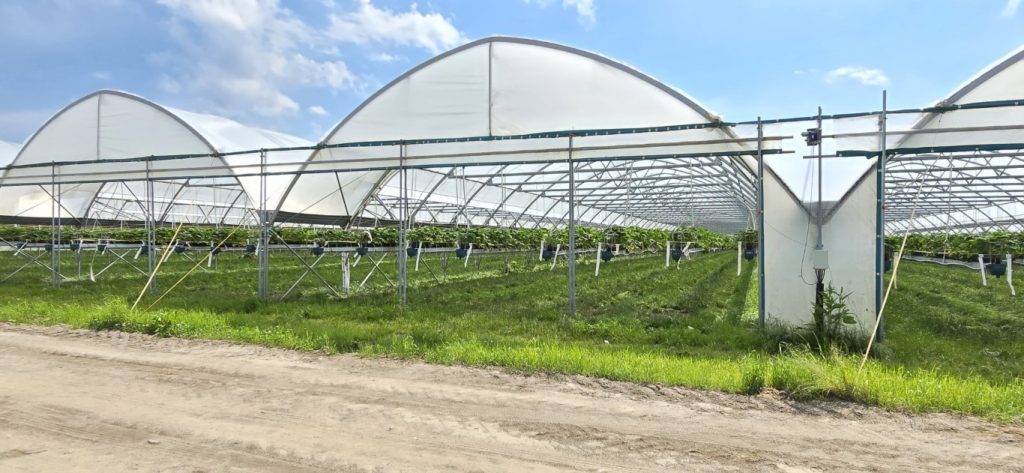
Gods blessings for everyone, not only for the Christmas, but also for the coming year.

Gods blessings for everyone, not only for the Christmas, but also for the coming year.
In the past i have written more about irrigation. Most growers experience it as one of the hardest subjects of growing strawberries. There are so many links to the growth:
– Vegetative / Generative growth balance
– Rooting
– Quality of the strawberries (tast, firmness, skin quality and sensitivity)
– Production
But it also direct connects to EC / Feed, Diseases (leaf and root diseases), Tipburn.
Every reason to just do it good, if possible at all.
A few basics of irrigation:
– direct relation between evaporation and radiation (more radiation = more uptake)
– there is no irrigation system 100% perfect, therefore we need drain to compensate those mistakes
– drain is also needed to flush balast salts or too high EC

Above you see different irrigation graphs.
Green:
dark green – moisture content grower 1
ligh green – EC grower 1
Reddish:
purple – moisture content grower 2
light green – EC grower 2
Yellow: radiation (Watt/m2)
Bar graph:
blue: irrigation amount
red: drain water
In green a nice irrigation: moisture content is increasing over de day and decreasing in night time. The green line below it is the EC, which is stable or a bit decreasing.
Irrigation from the other grower is in red/purple. There you can see a quite stable or even slightly decreasing moisture content. This in combination with the EC increasing.
In the bar graph below blue = the irrigation, red is the drain. It is clearly visible that there is only just a bit of drain, not enough to even out mistakes or flush high feed contents.
Normal drain percentages for full grown crops:
– Sunny weather: 30-40%
– Half cloudy: 15-25%
– Cloudy, rainy: 5-15%
Normal dry – down:
– between sunrise and first irrigation: 0,5-1,5%
– between last irrigation and sunset: 1-2%
– between last irrigation and the first irrigation next morning: 3-6%
– lower dry downs is more vegetative growing, higher dry downs is more generative growing.
Rooting paterns are direct influenced by the way you irrigate:
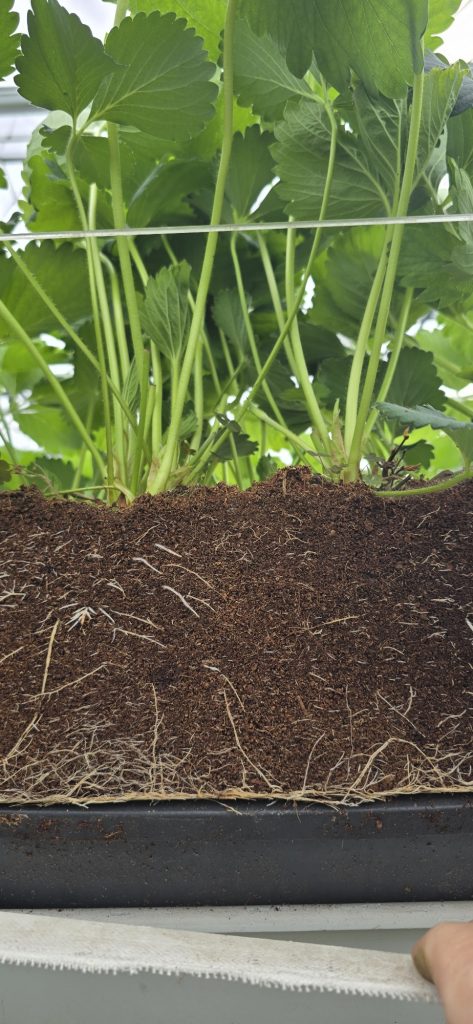
– dry growing: roots mainly in the lower 25% of the substrate
– wet growing: roots higher in the substrate and less in the bottom 10% of the substrate
– good growing: roots everywhere but in the top 2 cm of the substrate
– irregular irrigation: white and brown roots
On the left side dry growing: roots on the bottom and not enough roots in the rest of the substrate

In order to know if you are on track, drain% are one of the ways to check it, as mentioned above. The other things that is really important is that the irrigation is stable. Therefore we have a check mechanism: ml/joule (or officially: ml/m2 / joule/cm). This should be quite stable:
– between the irrigations of the day
– stable between the days. It should also be almost the same on a dark cloudy day as on a bright sunny day.
If you take care of this irrigation being stable, and the drain percentages are correct, you normally have a good rooting crop, like you can see in the picture above.
The best way to get this stable is by using the irrigation based on radsum, and not or almost not limited by time (min time or max time). Most growers i visit i advice to set the max time on about 6 hours and the min time on about 10-15 minutes.
Strawberry quality issues are mainly the consequence of irrigation, high EC or recipe.
Irrigation:
– big deviations in ml/joule within the day or between the days, causing roots sometimes to be dry, sometimes to be water soaked.
– too much irrigation in warm, very humid days or evenings may cause root pressure issues: fruits getting soft because they collapse.
High EC:
– too high EC gives a hard water uptake and a bad uptake of for example calcium causing softer fruits
Recipe:
– high ammonium, too high or too low potassium may cause soft fruits.
– therefore take frequent drain and irrigation water samples and have them analized.
Production
There is a direct correlation between water uptake and production. If the water uptake of a crop slows down, production (total production = leafs, flowers, strawberries, roots) drops. We need al these in order to get a good fruit production.
You want your water uptake to be paralel to the radiation (watt/m2). If that is correct, irrigation seems to be good. If the water uptake is influenced by your irrigation (increase in water uptake right after an irrigation), the water uptake and evaporation was limited by the water content in the substrate – thus limiting production and/or quality.
The virgin gives birth
God is condemned
Man raised from the death
– eastern –

For Christians the most important feast: God loves us people so much, that for us He lived on the earth, for us He suffered. So we may gain new life.
Therefore for me the new spring, new flowers, new strawberry plants growing, is every year a sign of this new life.
Eastern news: https://www.bible.com/bible/59/JHN.20.ESV
Therefore we wish everyone blessed ressurrection feast.
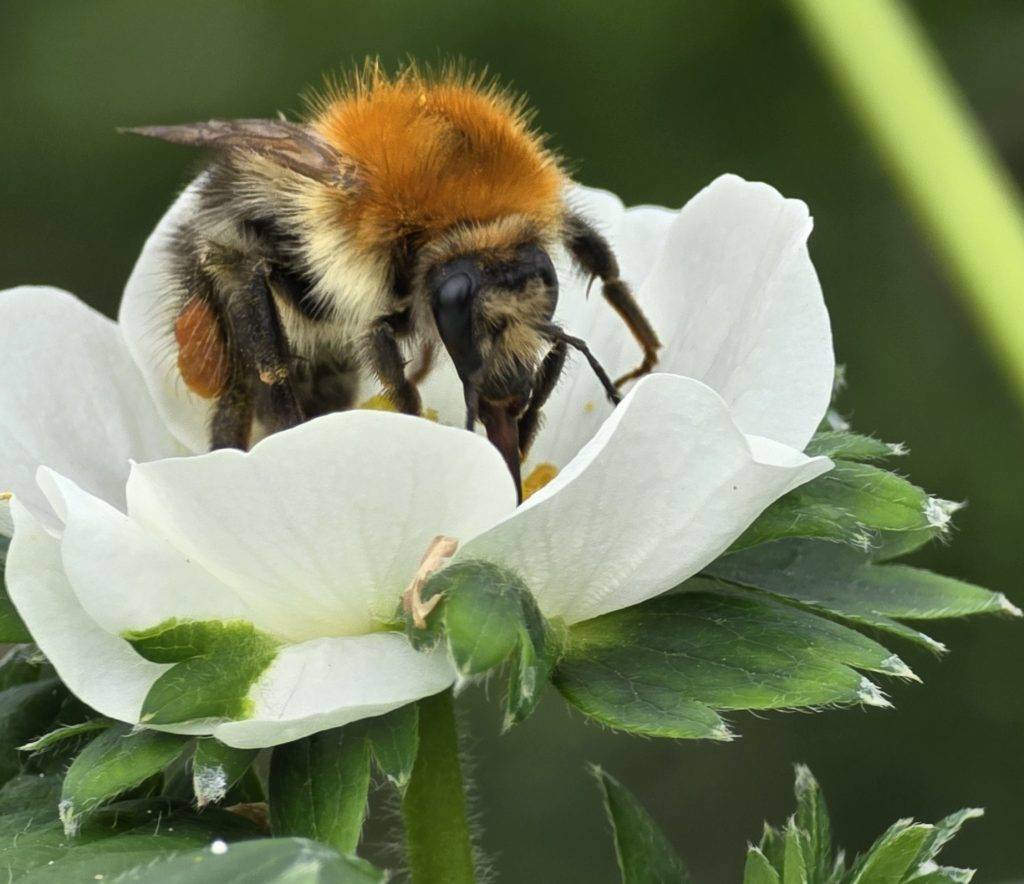
Does a strawberry make flowers, runners or nothing at all. A discussion in strawberry growing for more then a century.
Sometimes we see plants from the same propagator, the same variety behaving totally different. What happened here.
Something that might help is the vegetave – generative balance. This is not a black with issue, but with lots of levels and quite a lot of factors influencing the balance.
A variety can produce lots of runners, whereas on the same location but in another way of growing it might produce lots of flowers.
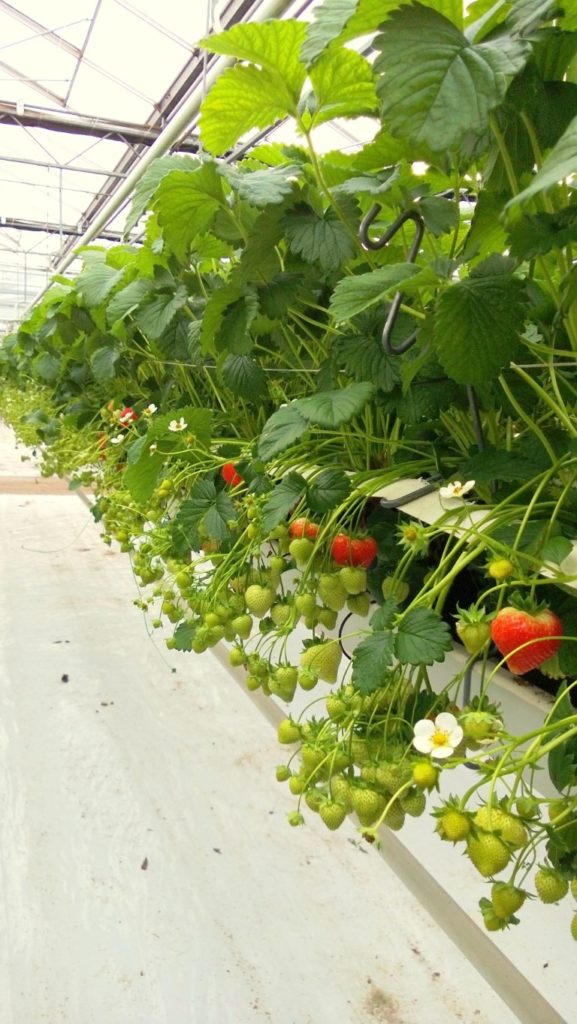
Daylenght is the basic factor that determines whether it produces flowers or runners.
– SD – short day varieties normally induce flowers under short day circumstances
– DN – day neutral varieties normally induce flowers under long day circumstances
When a day is long or short, depends on the genetics. But there are factors that influence these.
You can find something more about these factors in the withgoing presentation about vegetative / generative balance. Through several actions you can influence that till a certain leven, the vegetative / generative balance.
In the last months lots of growers have struggled with the quality of plant material. Not mainly about the variety, but just the quality of the plants. There are huge differences in the quality and this where quality is one of the main factors determining the profit of strawberries. Just some points:
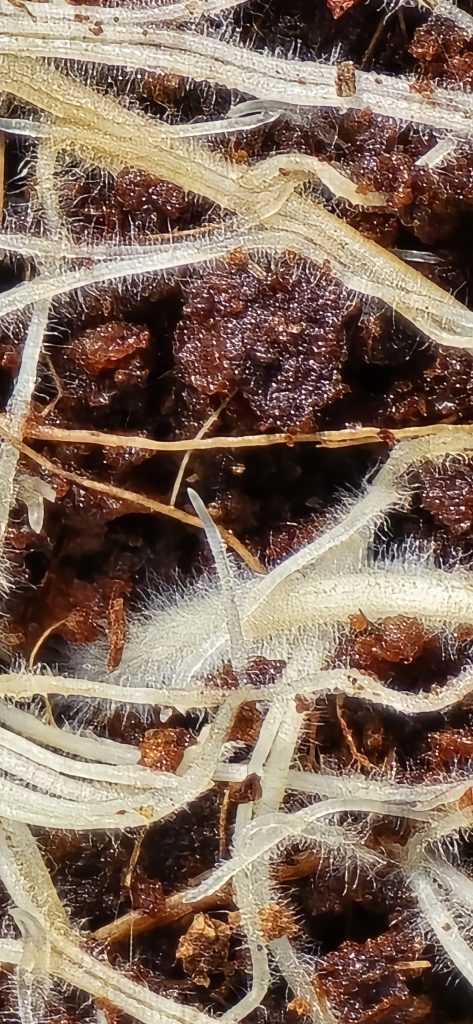
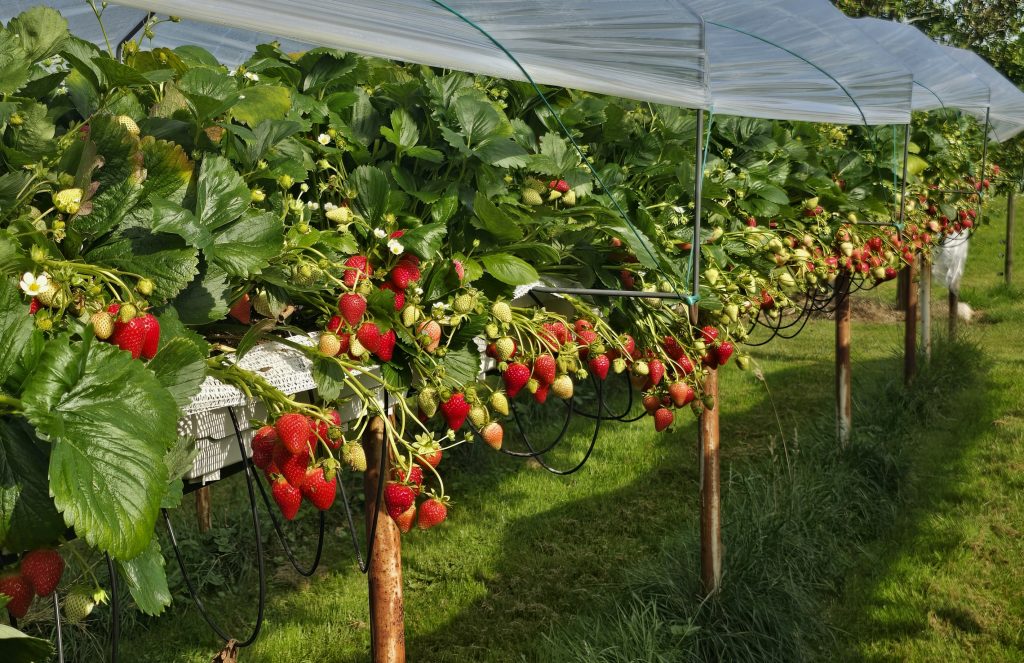
During my last visit to Canada i have seen several growers with plants from different propagators. And really with the values of plants varieing from far negative (so a negative value) till positive even more then 2 times its current price.
One of the issues on the background is irrigation and substrate. As we need very frequent irrigation or better misting right after sticking, the substrate easily gets way to wet, without oxigen. For rooting tips that is a disaster, causing plants dying, black roots etc. Below you see some pictures i took last week in Hungary, from tips stuck in coir. Just normal nice coarse coir (pith, no chips).
What makes the difference. Or how to do biological control.
One of the items that works good is, to focus on the whole ecosystem in and around the strawberries:
– in the greenhouse – for example on the soil
– around the greenhouse – close by
– in a wider area around the greenhouse
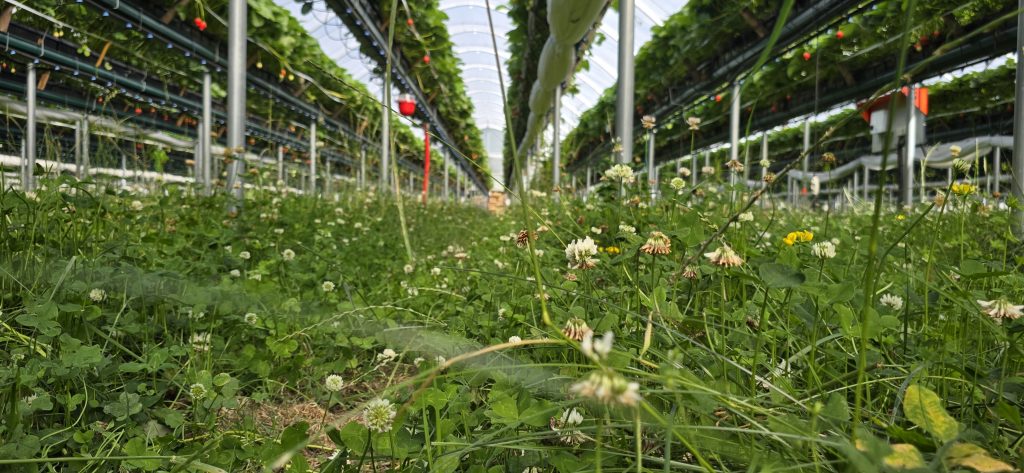
Below you see some pictures of the production sight of a German growers. For about 5 years she decided to spray at all on the strawberries. So no chemical treatment, neither a biological or organic spraying. Not against pests not agains diseases.
She had the guts to start that way. I respect this dicission of her. And it works.
Spidermites: no problem at all – lots of natural predators (like Andersoni) in the grass / cloaver below the table tops and quite a lot of Feltiella.
Aphids: In the spring allready aphidius kinds in the grass and a lot of hoverflies later in the spring.
Thrips: comercial Cucumeris and Orius
White fly: normally from a predator that looks like Encarsia
Grass / Cloaver – next to a good banker and source for predators, they influence the climate quite strong. Especially in hot summers the temperature drops and the humidity is a bit higher. This influences the growth and the mildew pressure.
At the end of the pictures two pictures that look like thrips, but it is not thrips damage. You can see very good that if you zoom in, the brown spots are one spot, and not the small lines caused by thrips.
This time a few nice pictures of cyclamen mites: eggs and larvea. But also some Aphidoletes, Hoverfly and Ladybug.
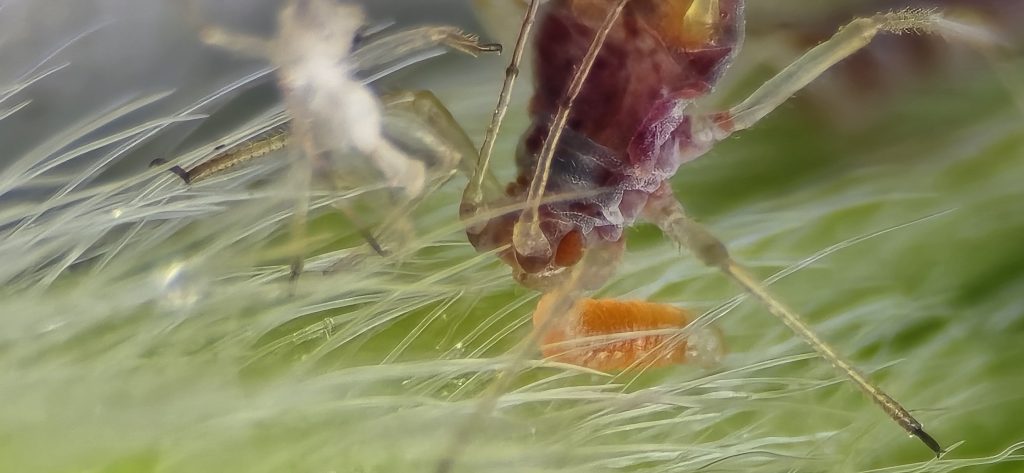
Cyclamen mite, can be really a big issue in strawberries. I see that in case of chemical pest controll, there are always some issues. In case of biological control (cucumeris or andersoni) cyclamen mite are no big problem.
The biggest problem of cyclamen mite is, that they are so small. If they where as big as an elephant, they could never develop. But if we see a problem, there are allready lots of them and mostly hard to treat.
Below 2 video’s: one of cyclament mites and one of a spidermite predator. To be honest i don’t even know its name…
This week again several new pictures of bugs.
Especially the lady bug eggs look great. We saw them in the Northern part of Germany (Area Langförden).
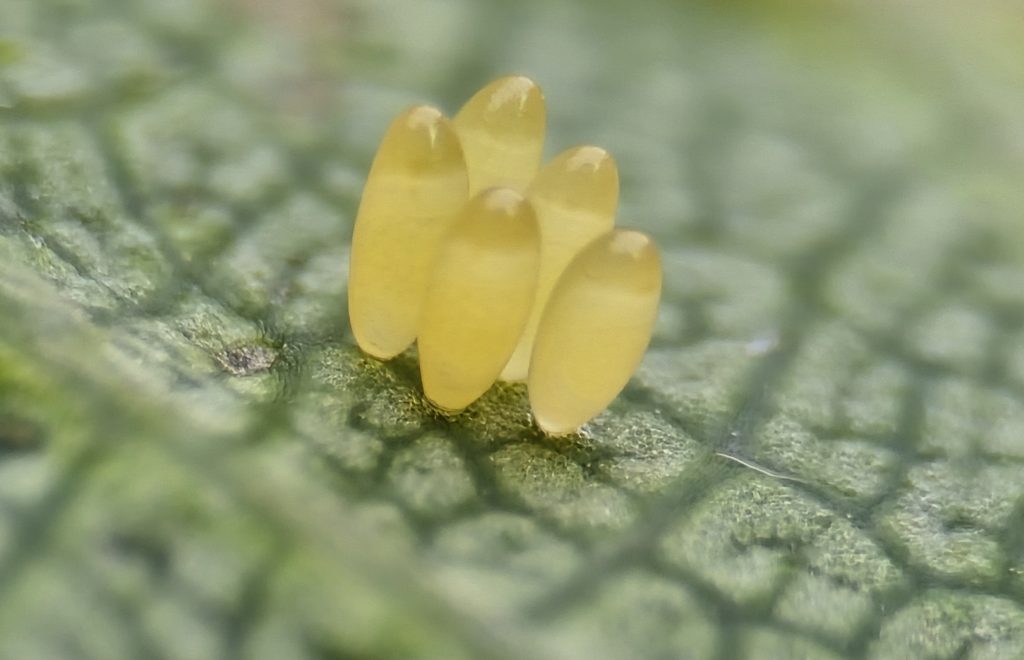
The other predators for aphids where also quite nice available this week: Aphidius, Praon, Aphidoletes. Just nic to see so many predators. They are needed, because the numbers of Aphids are increasing. But with some good natural sircumstances around the crops, they are not a big issue (although they may become).
Against spidermites there where some nice feltiella and andersoni active.
Most important way of getting these is:
-don’t use insecticides,
-don’t use too much oil or wetting agent if you have to spray
-take care of natural circumstances aournd the strawberries: for example bushes, flower zones etc will help a lot.
-don’t be too clean and accept some weeds and flowers around the strawberries (seems contraproductive, but isn’t always).
This week a lot of spidermites and predators crossed my road. A beauty to see the interaction between the spider mites – predators – climate. With a good climate and with good ecology in and around the production site.
Below you see a (quite – sand road is a pity) good example of a nice climate for predators and strawberries: grass (or better a grass – cloaver – flower mix) around and below the tabletops. Advantages:
– development of a natural predator population right around the strawberries
– buffer for predators
– attraction of predators like hover flies, lacewings, feltiella etc
– an excellent climate for strawberries: a humidity buffer in dry periods – causing less problems with milldew, cooler climate and a better production.
